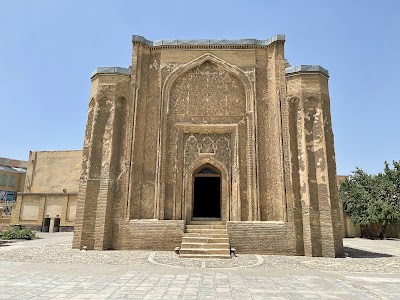Gonbad-e Alavian (گنبد علویان)
Overview
Gonbad-e Alavian, also known as the Alavian Dome, is a stunning architectural masterpiece located in the city of Semnan, Iran. This captivating structure, which dates back to the Seljuk era, stands as a testament to the intricate craftsmanship and rich cultural heritage of ancient Persia. A visit to Gonbad-e Alavian presents foreign tourists with a unique opportunity to immerse themselves in the fascinating tapestry of Iranian history and architecture.
Historical Significance
Constructed in the 11th century during the Seljuk dynasty, a period renowned for its advancements in art, science, and architecture, the Alavian Dome was originally built as a family mausoleum for the influential Alavian family. Remarkably well-preserved over the centuries, this structure allows visitors to appreciate the elegance and ingenuity of Seljuk architectural design up close.
Intricate Craftsmanship
One of the most striking features of Gonbad-e Alavian is its intricate stucco work. This finely detailed embellishment adorns both the interior and exterior walls, showcasing geometric patterns and floral motifs that are quintessential to Islamic art. The precision and symmetry of these stucco designs reflect the expertise of Seljuk artisans, making the dome a significant study point for those interested in Middle Eastern art and architecture.
Architectural Marvel
The dome itself, from which the structure derives its name, is an architectural marvel. Built using a double-shell technique, it not only serves an aesthetic purpose but also demonstrates advanced engineering for its time. The incorporation of baked brick and carefully calculated geometry has enabled the builders to create a strong and stable roof that has withstood various challenges throughout the centuries.
Cultural Heritage
Beyond its architectural splendor, Gonbad-e Alavian holds immense historical importance. It symbolizes the prosperity and intellectual achievements of the Seljuk dynasty and serves as a reminder of the resilience and continuity of Persian culture and tradition. For many locals, the dome is a source of pride and an integral part of their cultural identity.
Educational Experience
For tourists, visiting Gonbad-e Alavian transcends mere sightseeing; it is an educational experience. The site often offers guided tours that delve into the historical context, artistic techniques, and architectural innovations represented by the dome. These tours are particularly insightful for those eager to deepen their understanding of Islamic architecture and Iran's historical lineage.
Exploring Semnan
The surrounding area of Semnan further enhances the visit to the Alavian Dome. Known for its diverse cultural attractions—including ancient mosques, bustling bazaars, and traditional Iranian gardens—Semnan provides a rich backdrop for exploration. Coupled with the warm hospitality of the local people, tourists often find their visit to Semnan both enriching and memorable.
Visitor Accessibility
In recent years, efforts have been initiated to enhance accessibility and improve the visitor experience at Gonbad-e Alavian. Information panels, multilingual guides, and ongoing preservation works are part of a concerted effort to promote and protect this historical site. These developments ensure that the Alavian Dome can be appreciated by a global audience for many more decades to come.
Conclusion
In conclusion, Gonbad-e Alavian in Semnan is a true gem of Iranian heritage. Its historical depth, architectural brilliance, and cultural significance make it a must-visit destination for foreign tourists. By exploring this ancient structure, visitors gain valuable insights into the artistic achievements of the Seljuk era and a deeper appreciation for the enduring spirit of Persian culture. Whether you are a history enthusiast, an architecture aficionado, or a curious traveler, a visit to Gonbad-e Alavian promises to be a profound and enriching experience.



